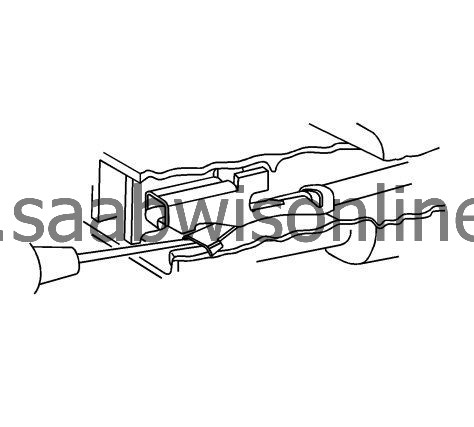Delphi Connectors (Pull To Seat)
|
|
Delphi Connectors (Pull To Seat)
|
Special Tools
For equivalent regional tools, refer to
Special Tools
.
If the terminal is visibly damaged or is suspected of having a faulty connection, the terminal should be replaced.

Follow the steps below in order to repair pull-to-seat connectors:
|
1.
|
Remove the connector position assurance (CPA) device and/or the secondary lock.
|
|
2.
|
Disconnect the connector from the component or separate the connectors for in-line connectors.
|
|
3.
|
Remove the terminal position assurance (TPA) device.
|
|
4.
|
Insert the proper pick or removal tool into the front of the connector body.
|
|
5.
|
|
Note
|
|
On connectors with more than one terminal the service loop may not be large enough to remove the terminal and crimp on a new one. If the terminal wire does not have a large enough service loop for removal, cut the wire 5 cm (2 in) behind the connector before removal.
|
Grasp the wire at the back of the connector body and gently push the terminal out the front of the connector body.
|
|
1.
|
If the wire needed to be cut in order to remove the terminal, gently push a small length of the same size wire through the back of the connector cavity until there is enough wire exposed in order to crimp on a new terminal. If the wire was not cut, cut the existing wire as close to the old terminal as possible.
|
|
2.
|
Strip 5 mm (3/16 in) of insulation from the wire.
|
|
3.
|
Crimp a new terminal to the wire.
|
|
4.
|
Solder the crimp with rosin core solder.
|
|
1.
|
Align the terminal and pull the wire from the back of the connector in order to seat the terminal.
|
|
3.
|
If the connector is outside of the passenger compartment, apply dielectric grease to the connector.
|
|
4.
|
Install the TPA, CPA, and/or the secondary locks.
|
|
2.
|
Find the appropriate terminated lead.
|
|
3.
|
Use the appropriate splice sleeves depending on the gauge size.
|



